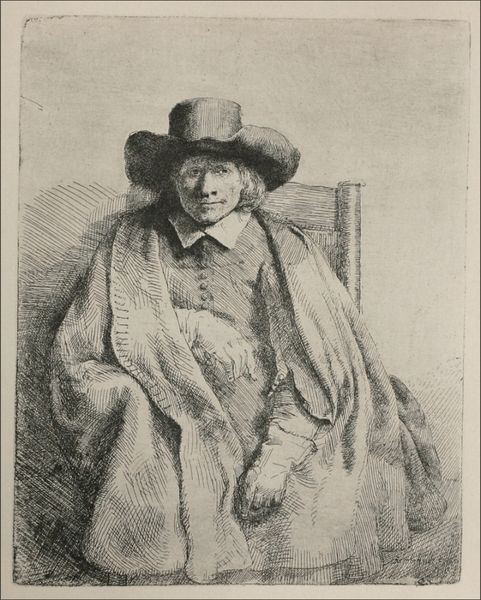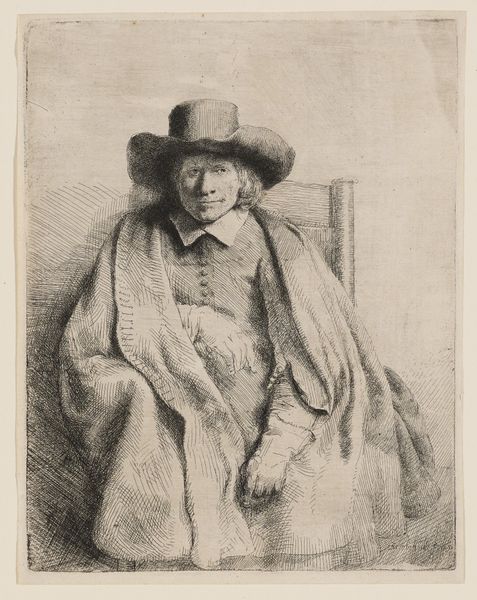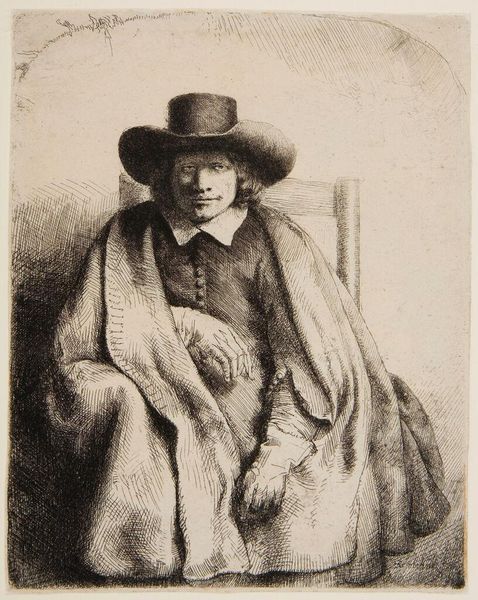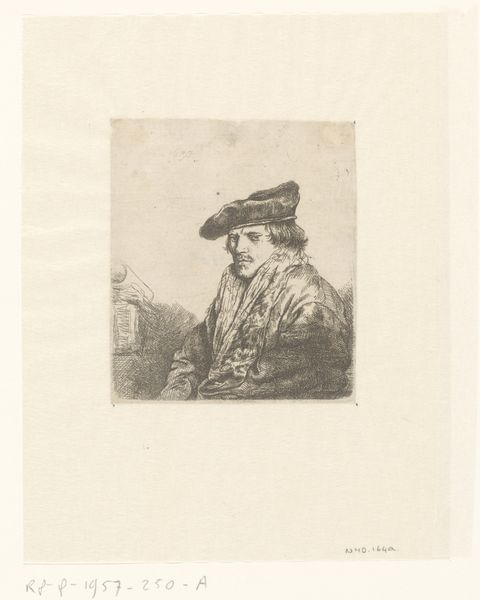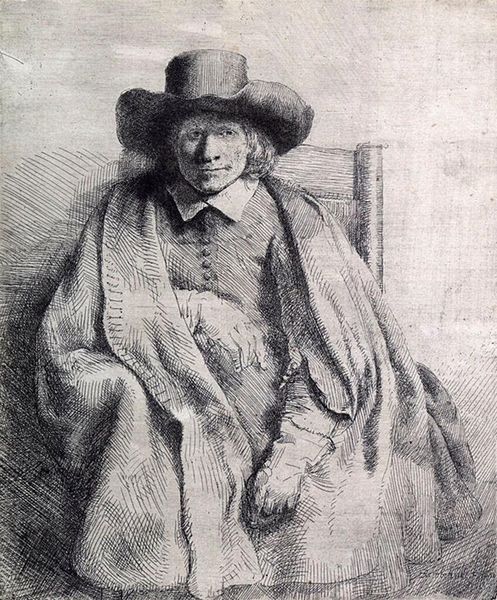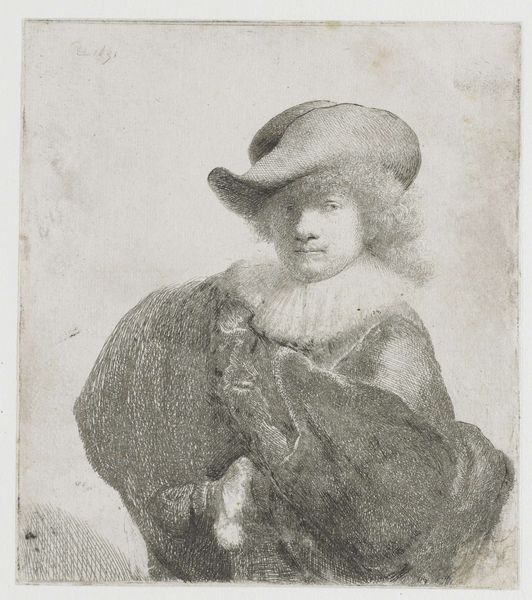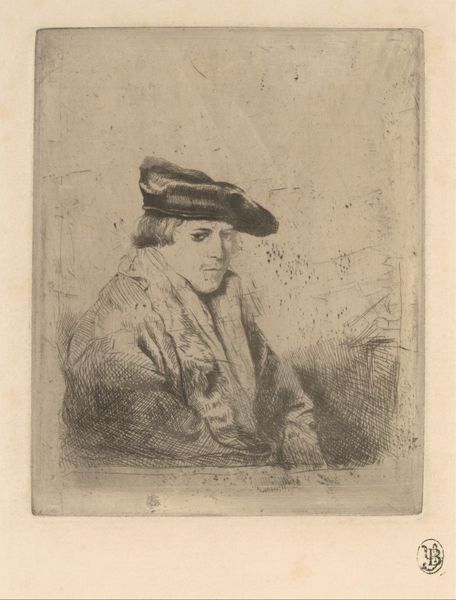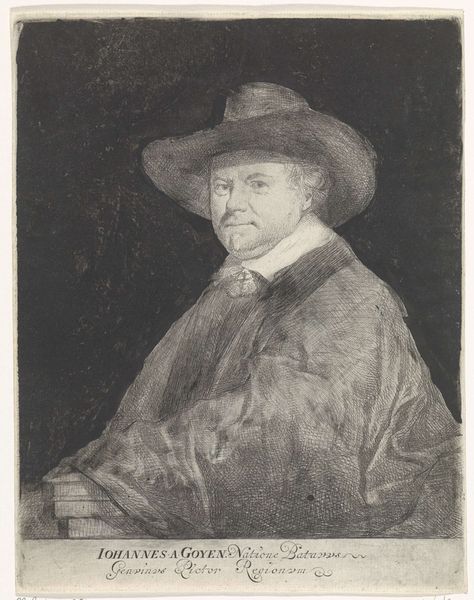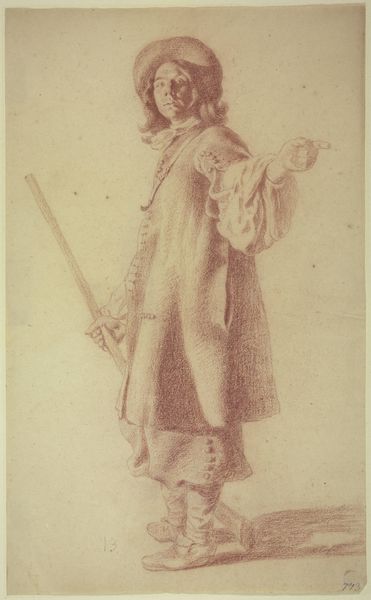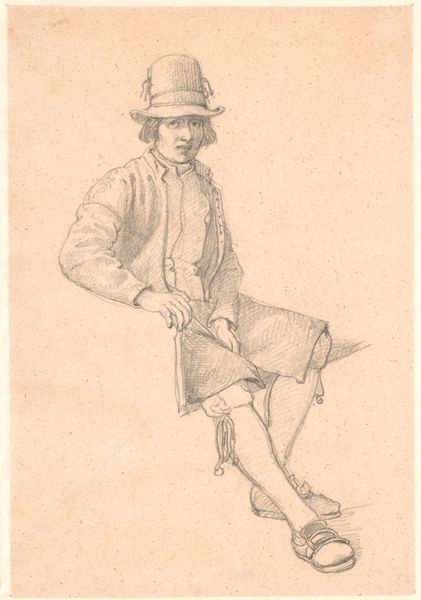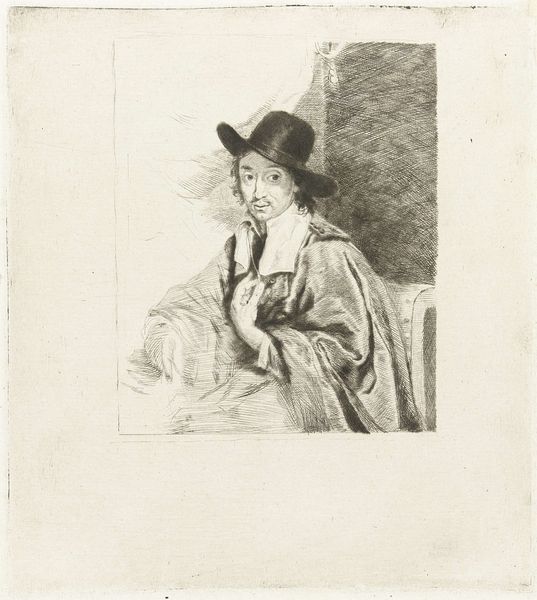
drawing, print, etching
#
portrait
#
drawing
#
dutch-golden-age
# print
#
etching
#
portrait reference
#
men
#
portrait drawing
#
genre-painting
#
profile
Dimensions: sheet: 8 3/16 x 6 5/16 in. (20.8 x 16 cm)
Copyright: Public Domain
Curator: Rembrandt van Rijn's 1651 etching, "Clement de Jonghe, printseller," offers us a striking portrait of a man deeply immersed in his world. Editor: My first impression is one of quiet dignity, perhaps even a touch of melancholy. The sitter is enveloped in shadow, his face subtly illuminated. Curator: The layering of etched lines really lends itself to creating that contemplative mood. Consider, for instance, how Clement's posture and the way his cloak is draped might suggest a certain reserved authority, perhaps reflective of his role as a purveyor of images. Editor: Indeed, but beyond that, the tangible qualities of the print itself—the paper, the ink, the bite marks of the etching—speak volumes. The labor involved, the repeatable nature of the print medium in its own right suggests that images themselves are a material, circulating currency in 17th-century Dutch society. Curator: Fascinating point! And I agree that de Jonghe's choice of attire—the simple buttons, the stark white collar, even the rather rakish hat—are indicative of both status and, possibly, a cultivated public persona. A persona quite carefully constructed through repeatable prints to convey trustworthiness as much as stylish authority. Editor: Right, so the fact that we can stand here in the Metropolitan Museum and see it suggests the transformation this material form, this print, went through in terms of commerce and access. The print has gone on to signify value in a much different sense. How interesting! Curator: Absolutely. Looking at it, I also wonder about Rembrandt’s relationship with Clement. As a printseller, de Jonghe undoubtedly played a vital role in disseminating Rembrandt’s work. This portrait can, therefore, be seen as a kind of tribute. Editor: So the circulation of Rembrandt’s portraits via the printed image – his works are intrinsically linked to the economy, to de Jonghe and others of his trade. Fascinating! Curator: The portrait then transcends being just an individual likeness to reveal broader cultural meanings. Editor: It certainly makes you consider the image and its reach, doesn't it?
Comments
No comments
Be the first to comment and join the conversation on the ultimate creative platform.
